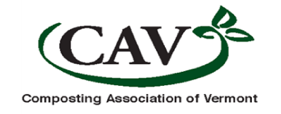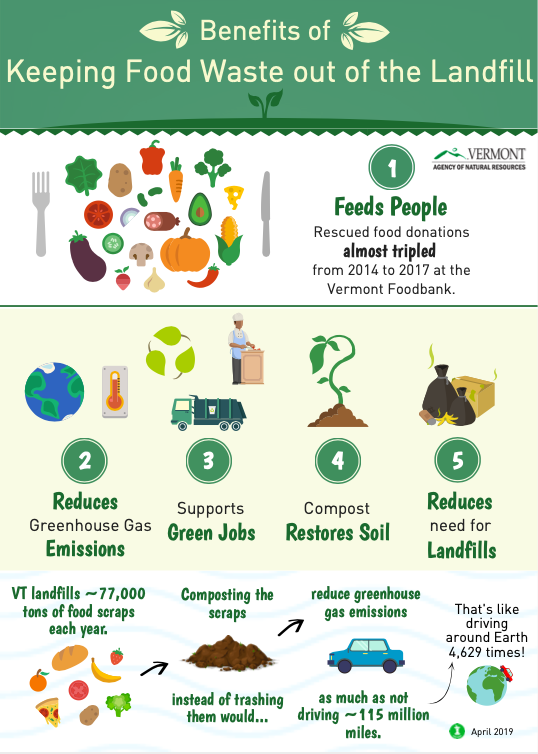Act 148: Food Scraps Banned from Landfill
/Guest blogger Ali Drew
Find more information here from the Vermont Department of Environmental Conservation
The last phase of Act 148 is being implemented today, July 1st. This means that all food scraps are banned from the trash.
What do I need to do?
So you likely know that you have to collect your food scraps in a separate container from the rest of your trash. But what happens next?
You have 3 options:
Solar digester for food scraps
Compost in your yard:
Compost bin: Food scraps (“greens”) and yard debris like leaves, dry grass, sawdust and chipped wood (“browns”) can be added to your compost bin. Adding carbon, or “browns” to your compost bin is essential to reduce odors and deter animals from your compost. This compost can be used as fertilizer for your garden!
Solar digester: This green cone method allows you to simply add food scraps, and doesn’t require “browns” to be added. These digesters decompose food scraps almost entirely, so you will not end up with compost you can use in your garden.
Drop-off composting: You can drop off food scraps and yard debris at any transfer station or bag-drop in Vermont. Many compost facilities also have drop-off options. Check out these resources by The Vermont Department of Environmental Conservation to learn more about services in your area: local Waste Management District or town & Materials Management Map.
Curbside pick-up: Ask your hauler if they offer leaf and yard debris or food scrap pick-up, or call or look at the website of a hauler on the statewide list of food scrap haulers.
Why are food scraps being banned from the trash?
Vermont is running out of space to throw its trash in existing landfills, and building new landfills is very expensive.
Food scraps and yard debris make up almost 1/4 of a typical Vermont family’s waste, and at restaurants food scraps can be over half the waste. Keeping these materials out of the landfill has a big environmental impact.
This graphic from the Vermont Agency of Natural Resources shows the positive environmental impact from keeping food waste out of the trash.
Want more information? Check out 802recycles.com & VTrecycles.com



